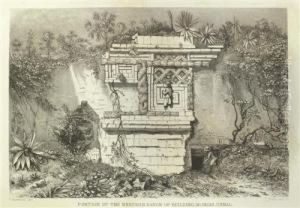John Lloyd Stephens Paintings
John Lloyd Stephens was an American explorer, writer, and diplomat who is best known for his pioneering work in the field of Mayan archaeology. Born on November 28, 1805, in Shrewsbury, New Jersey, Stephens was not primarily an artist but made significant contributions to the historical understanding of Central American cultures and the rediscovery of ancient Mayan civilization.
After graduating from Columbia College in 1822, Stephens pursued a career in law and literature. He developed a strong interest in travel and exploration, which was a popular genre in the 19th century. His first major travel book, 'Incidents of Travel in Egypt, Arabia Petraea, and the Holy Land', was published in 1837 and was well received, encouraging him to continue his travels.
Stephens' most significant work began with his expeditions to Central America, Mexico, and Yucatan in the early 1840s. Accompanied by the British artist and architect Frederick Catherwood, Stephens explored and documented the ruins of the ancient Mayan civilization. Catherwood's detailed illustrations and Stephens' vivid descriptions were compiled in the seminal works 'Incidents of Travel in Central America, Chiapas, and Yucatan' (1841) and 'Incidents of Travel in Yucatan' (1843). These publications played a crucial role in bringing the knowledge of Mayan architecture, hieroglyphs, and culture to the wider world.
Stephens' exploration and scholarship were pivotal in altering the contemporary understanding of the Maya and other pre-Columbian cultures. Before Stephens and Catherwood's work, the ruins of Central America were little known, and their true origins were often the subject of speculation. Stephens' writings provided a factual basis for the study of these ancient societies and were instrumental in initiating the academic field of Mesoamerican archaeology.
In addition to his exploratory work, Stephens served as the U.S. Ambassador to Panama and later played a role in the development of the Panama Railroad. Unfortunately, his career was cut short by illness, and he died on October 13, 1852, at the age of 46. His contributions, however, have left a lasting legacy in the field of archaeology and provided an invaluable record of the Mayan civilization at a time when such information was virtually unknown.
